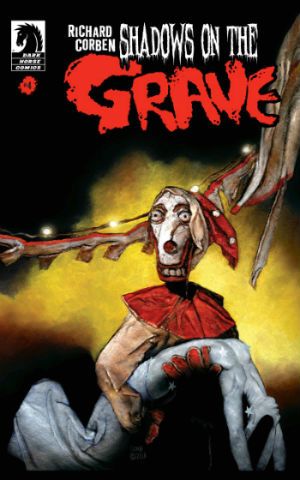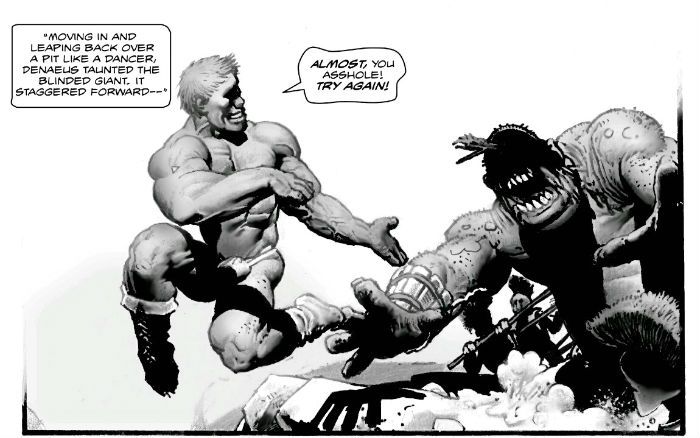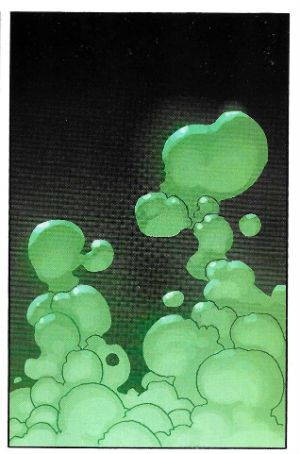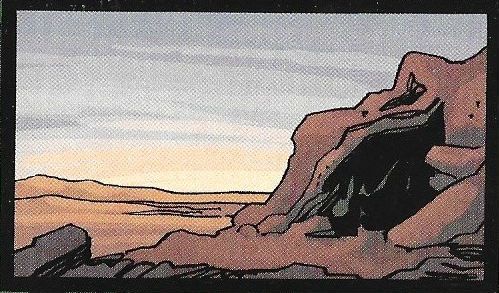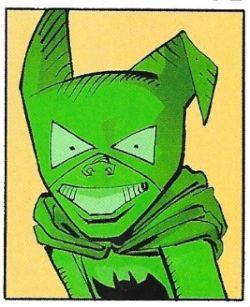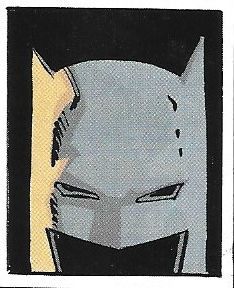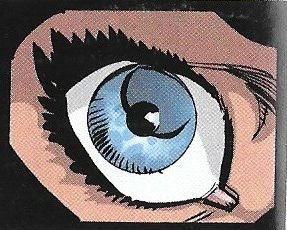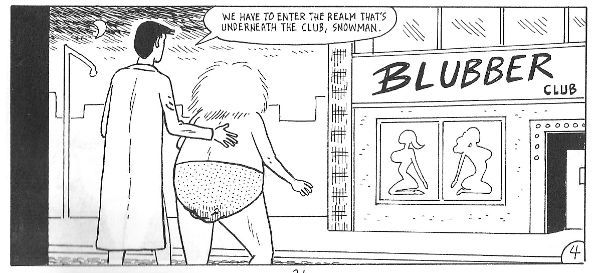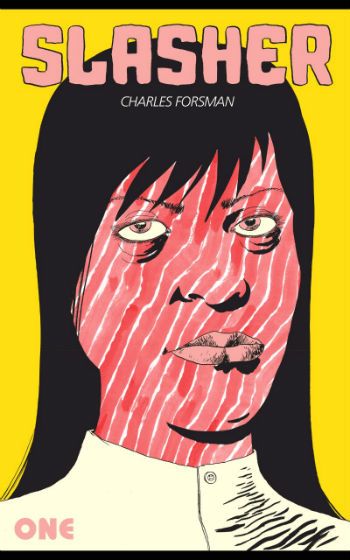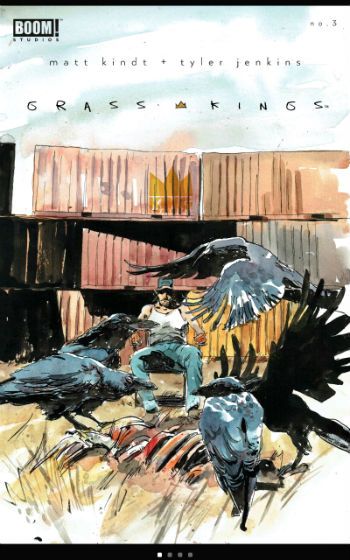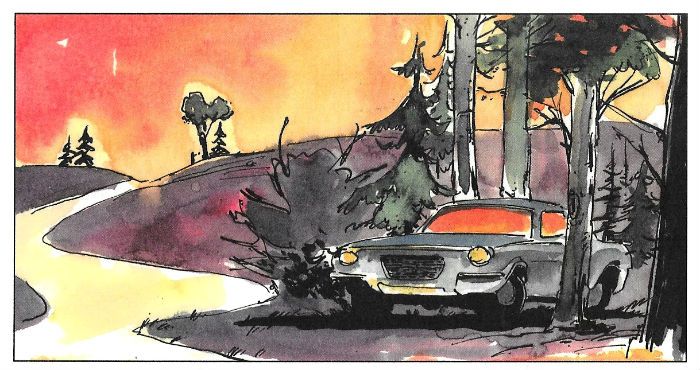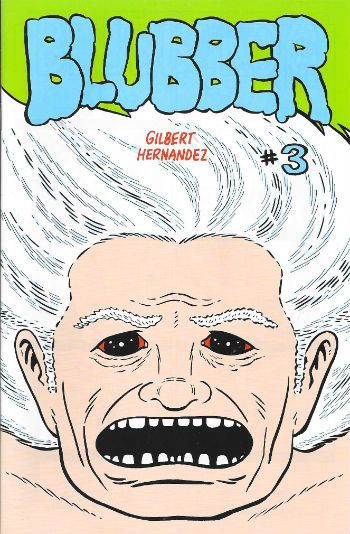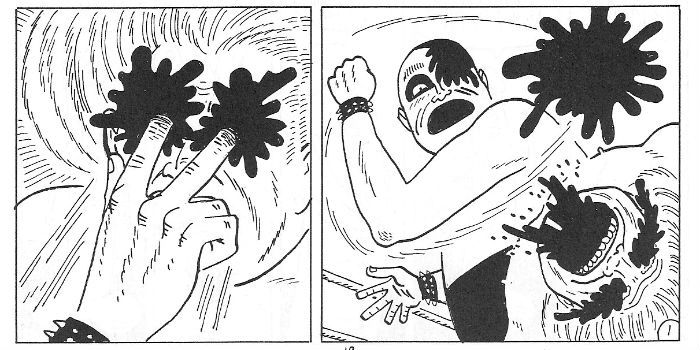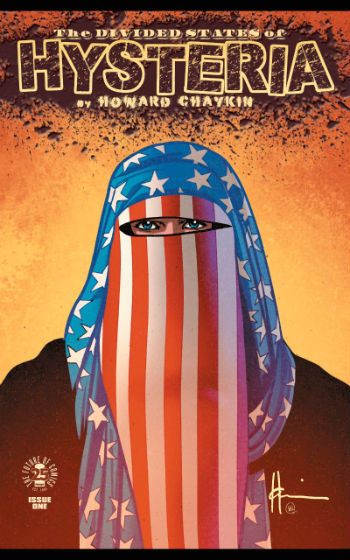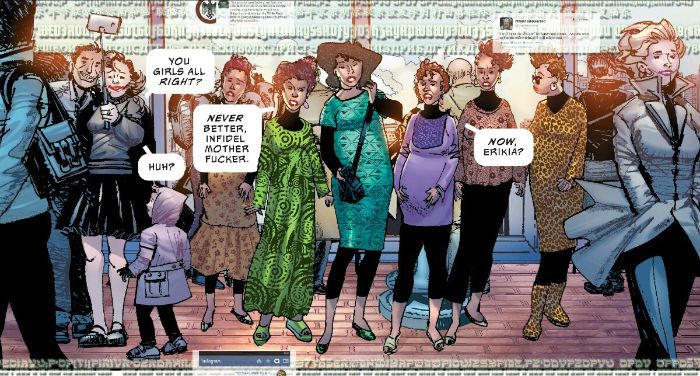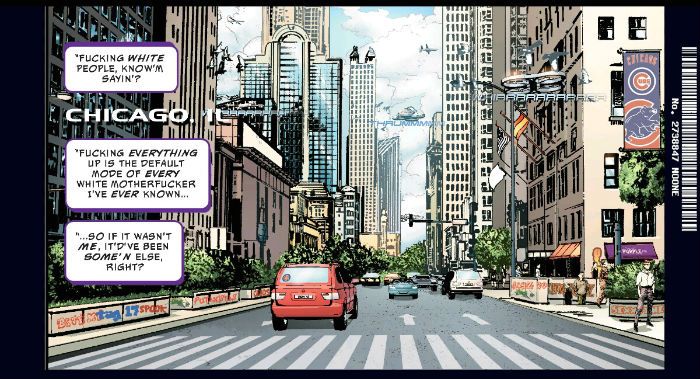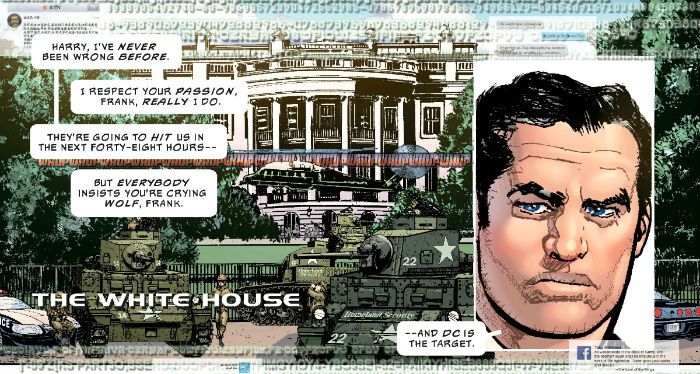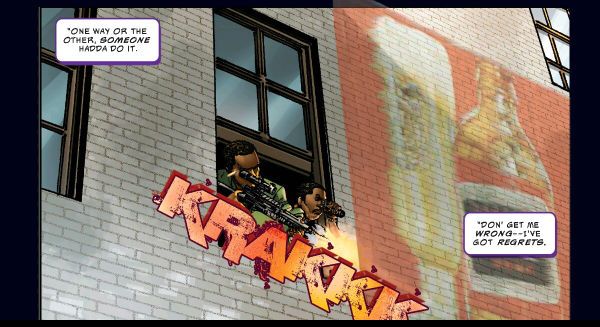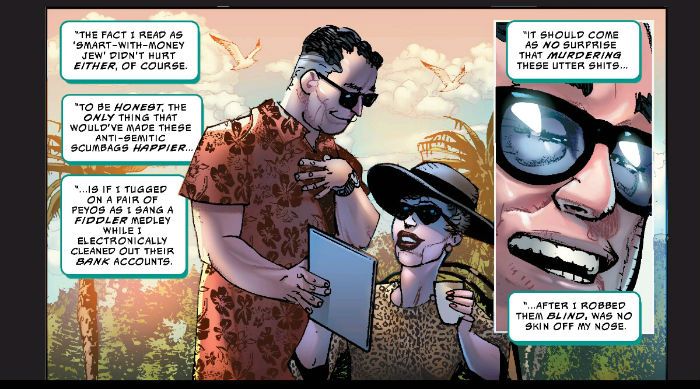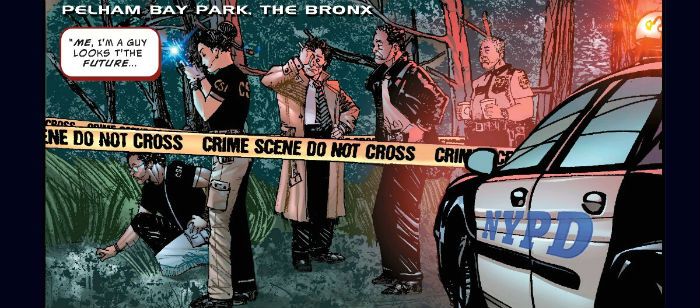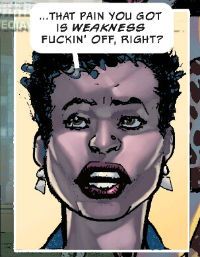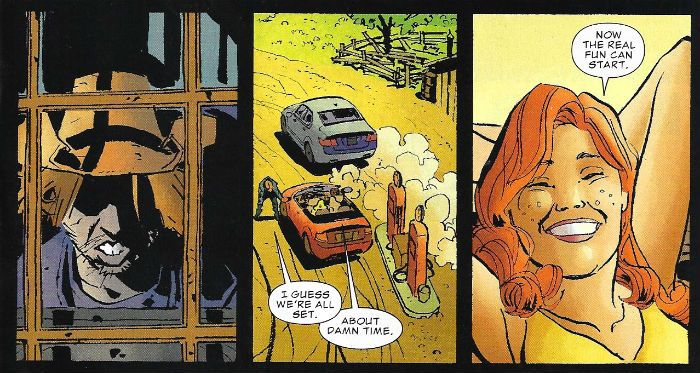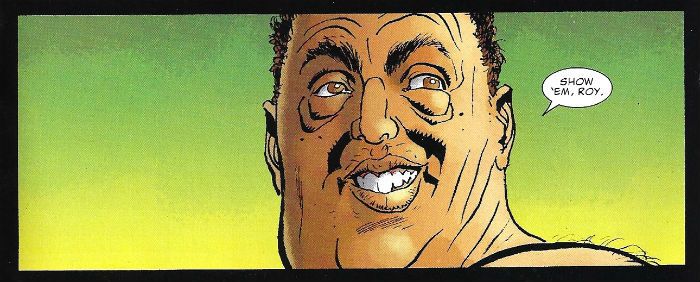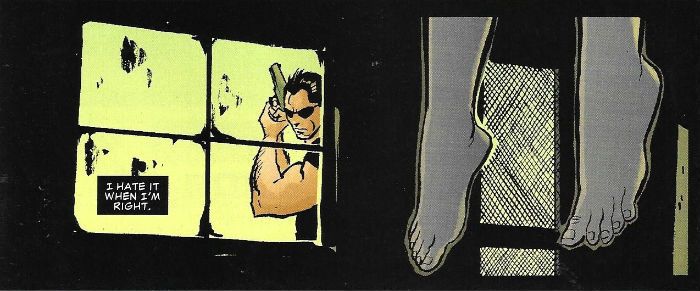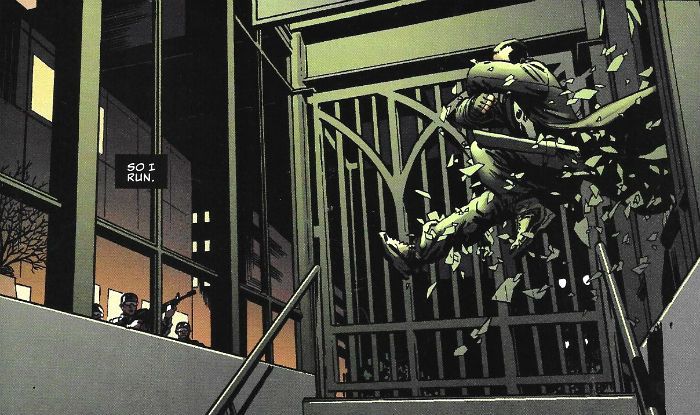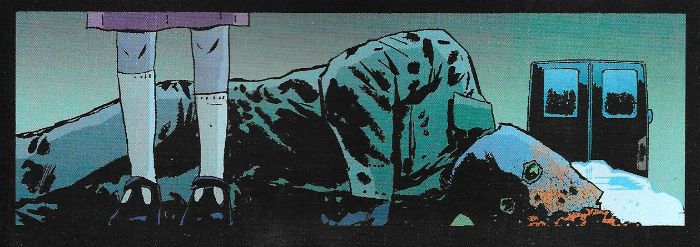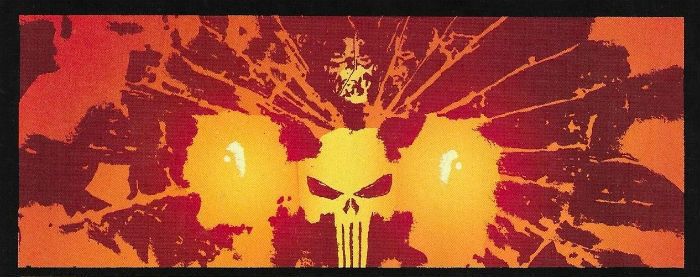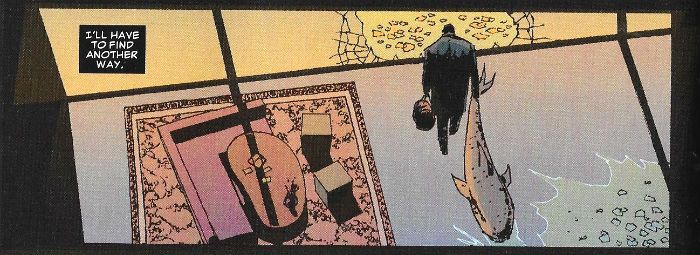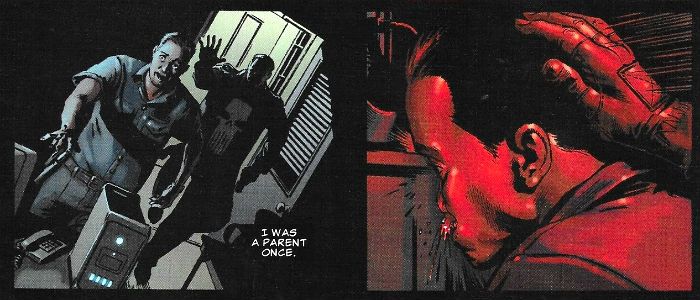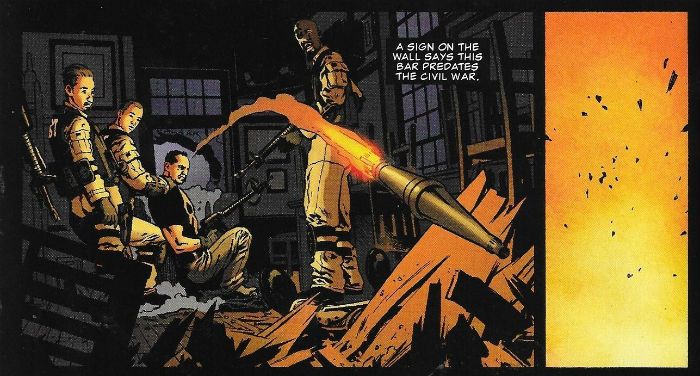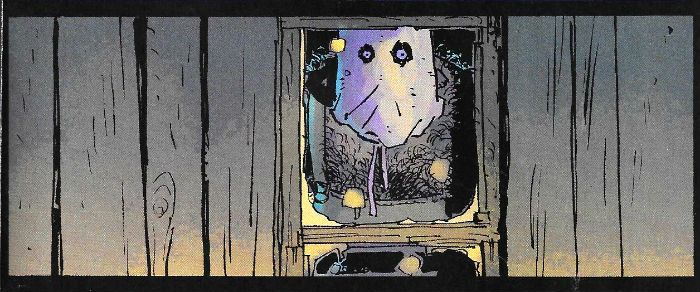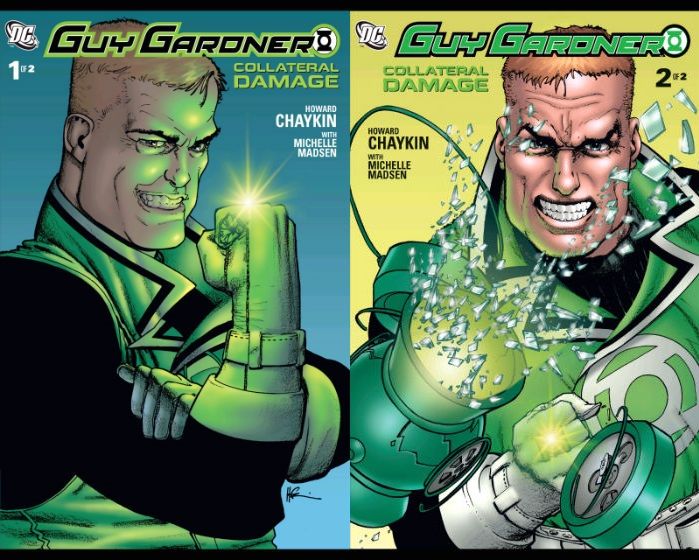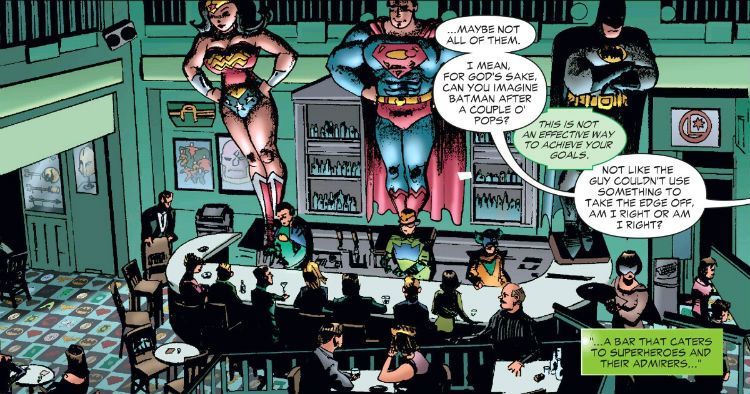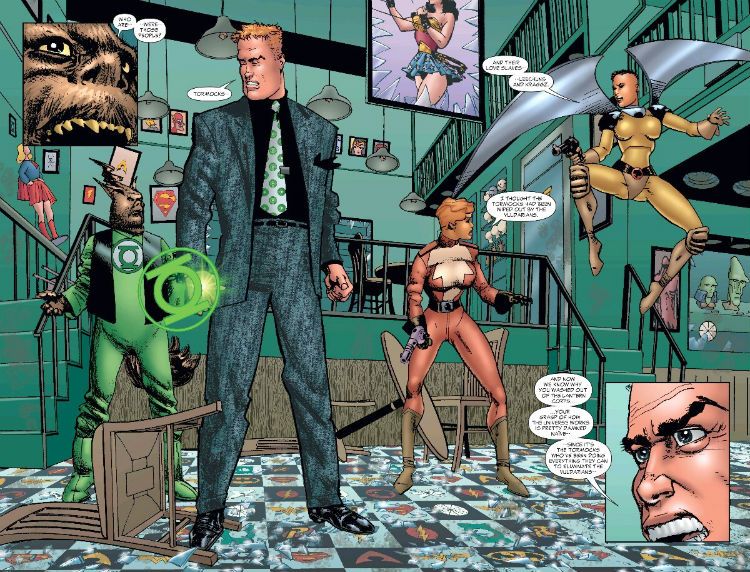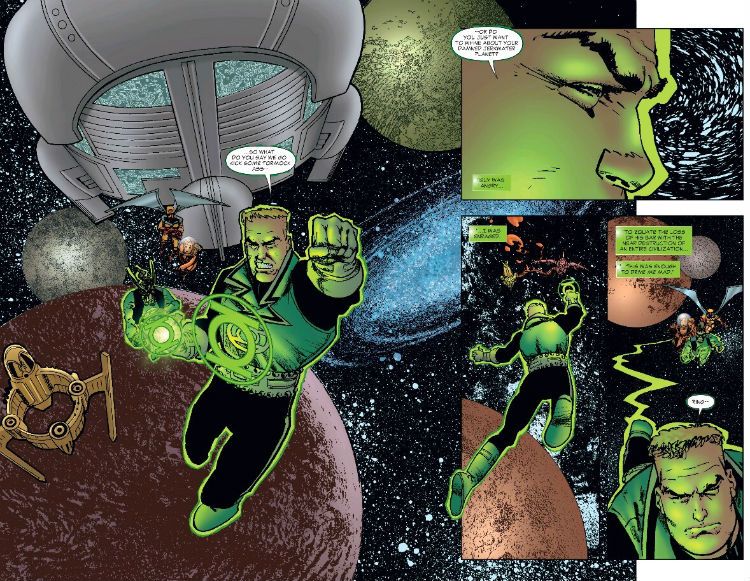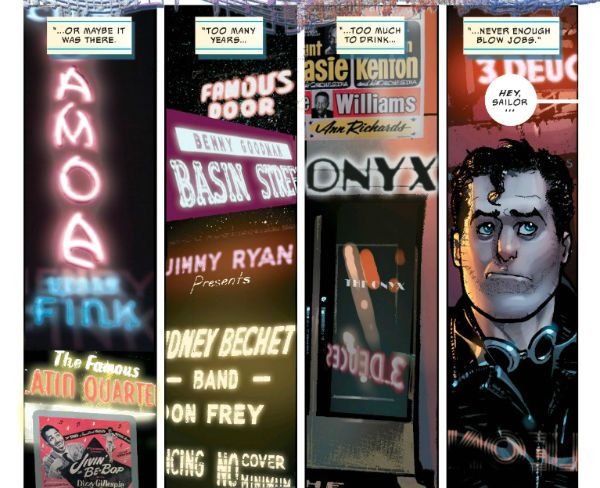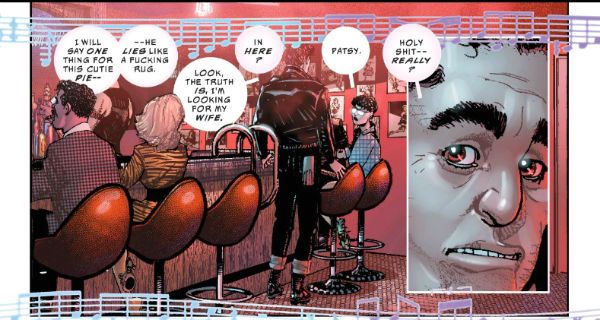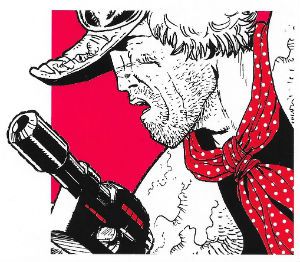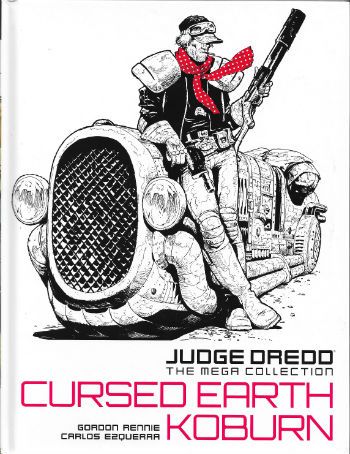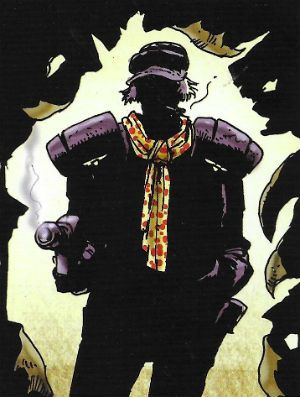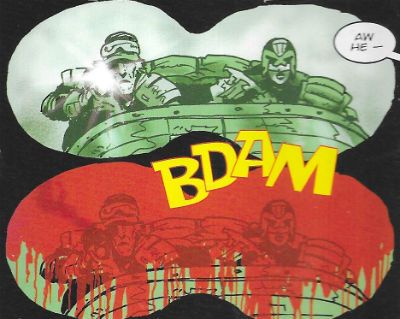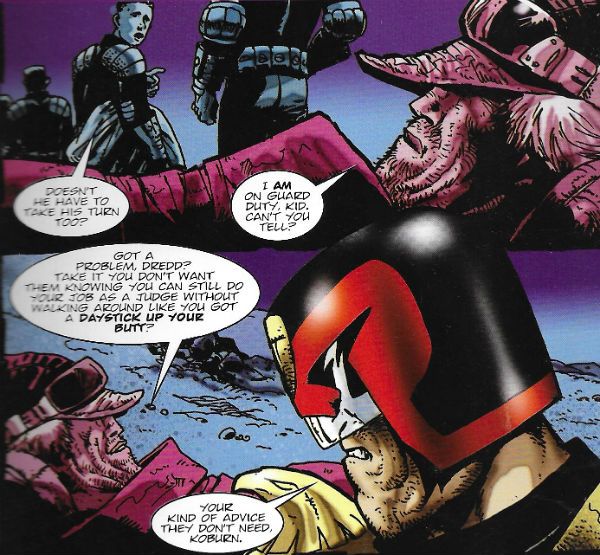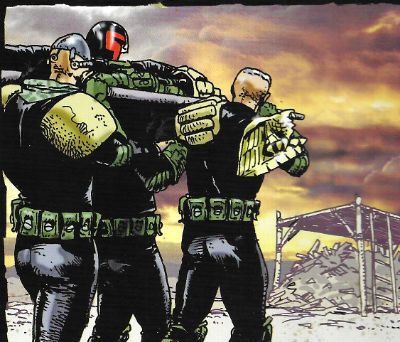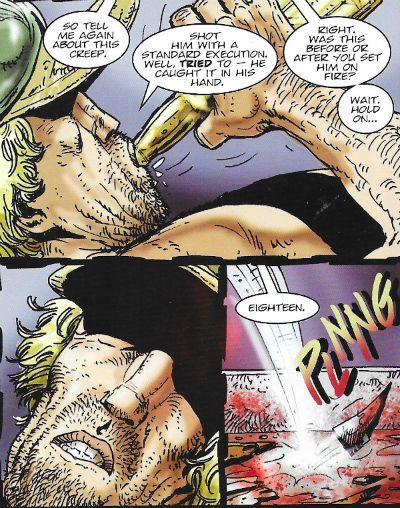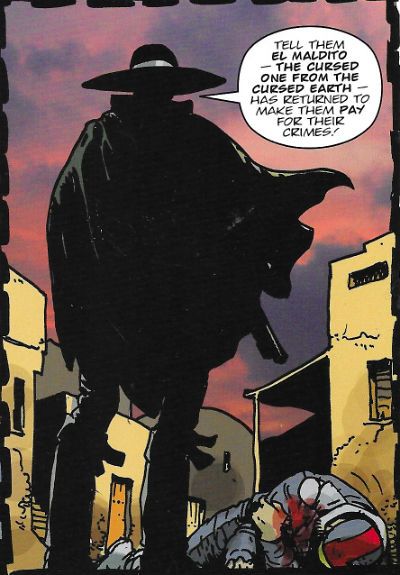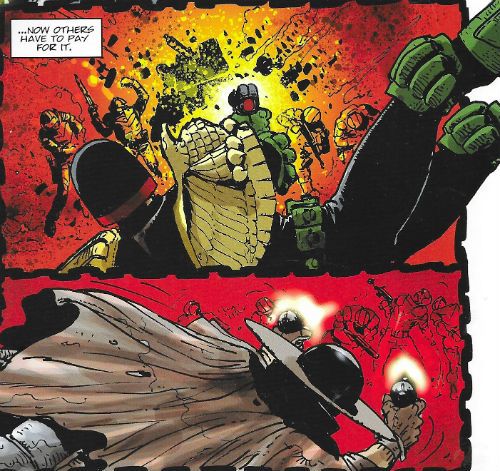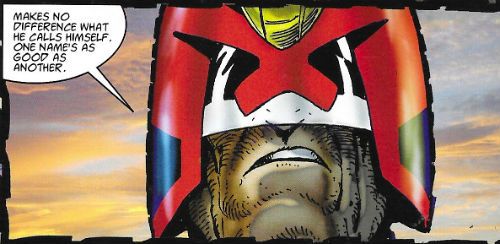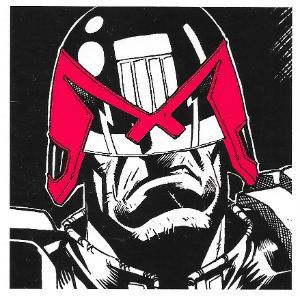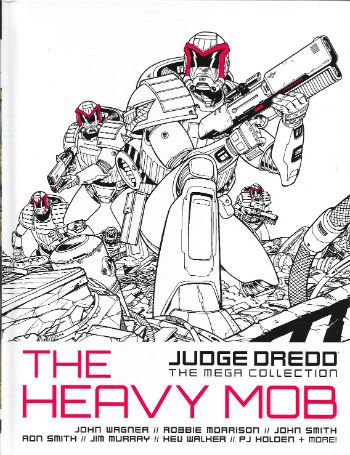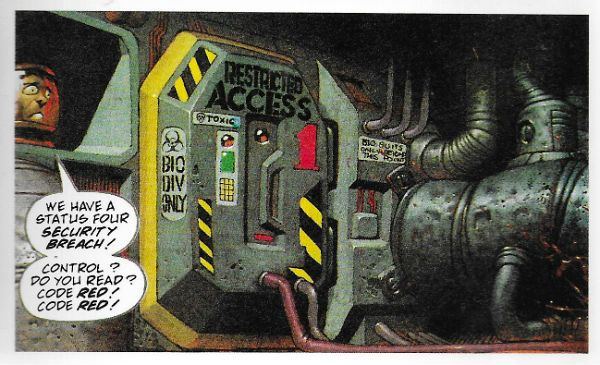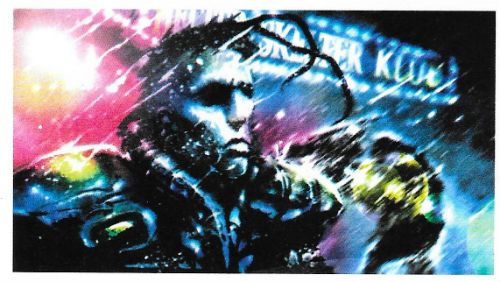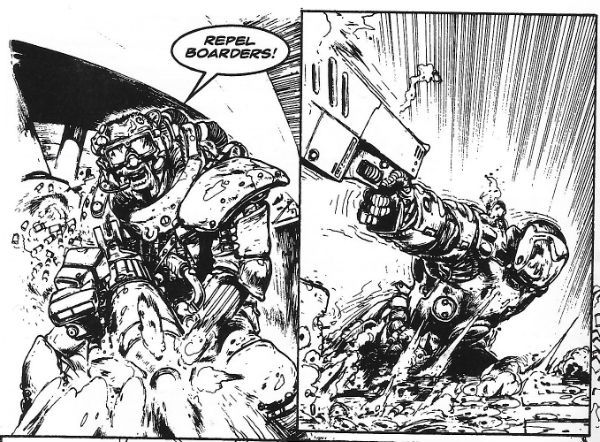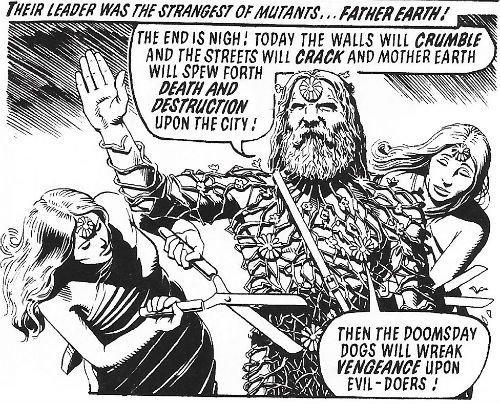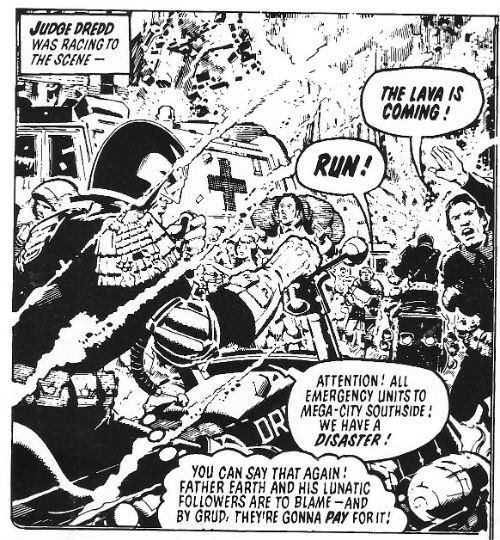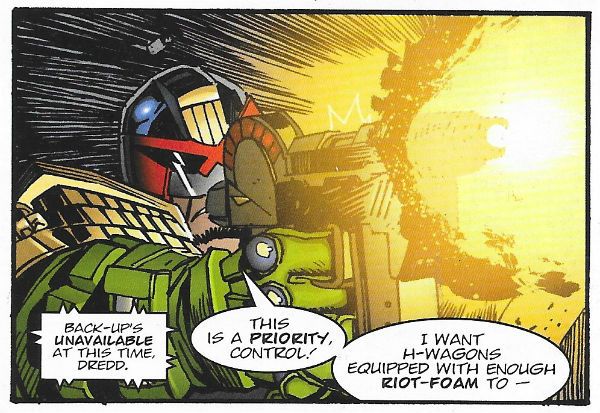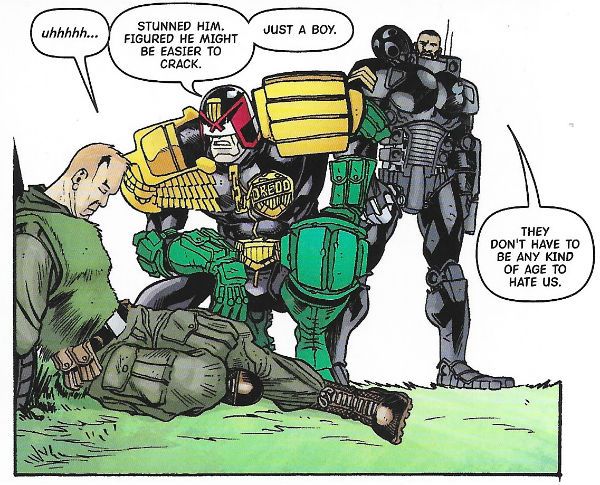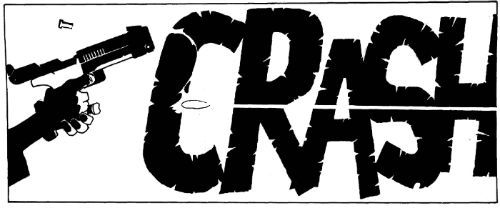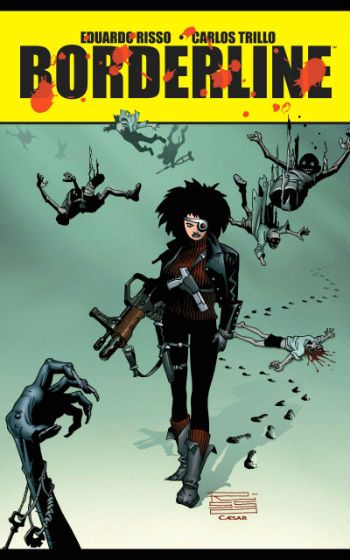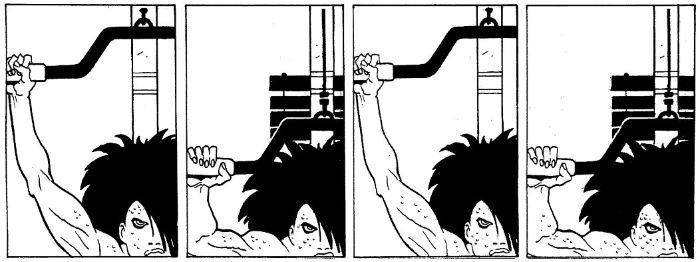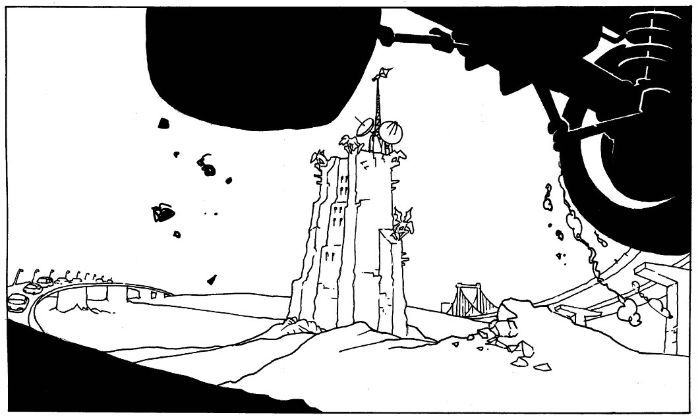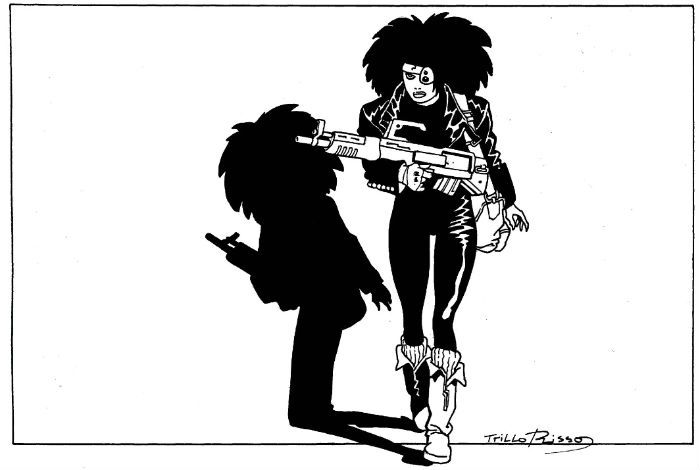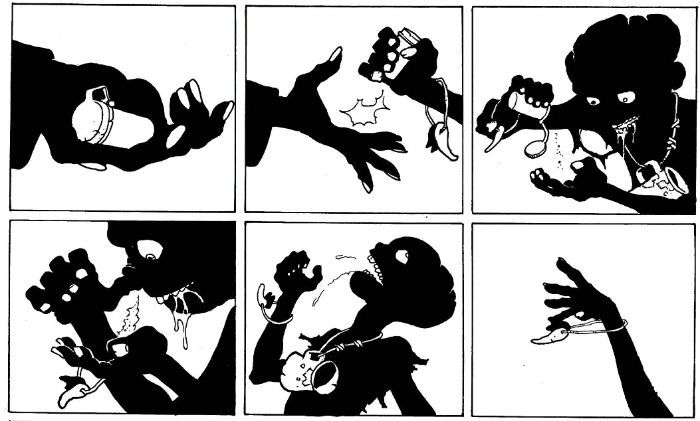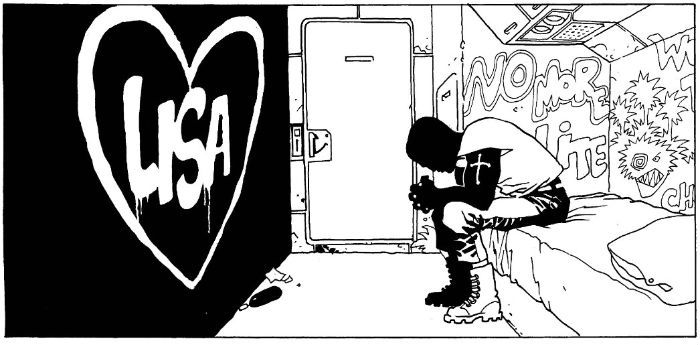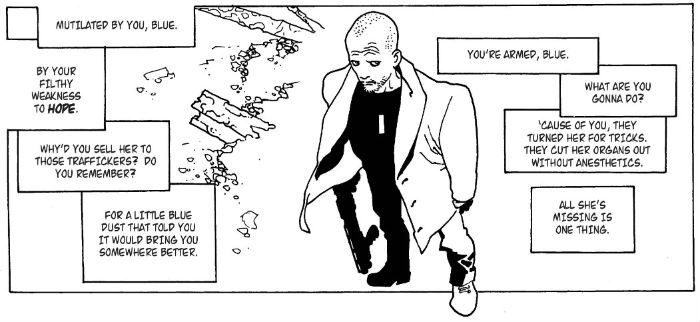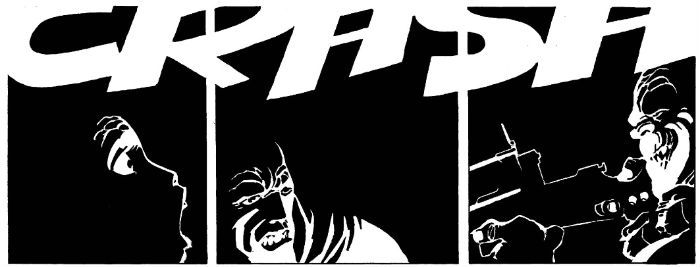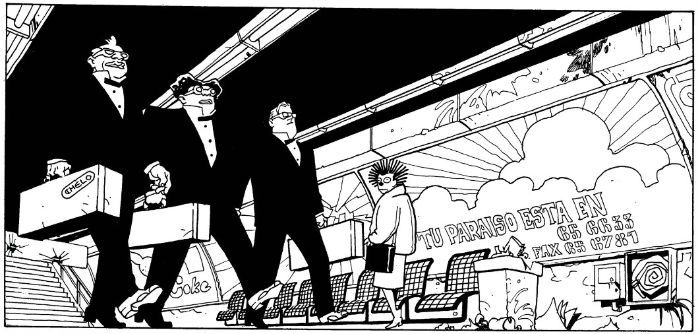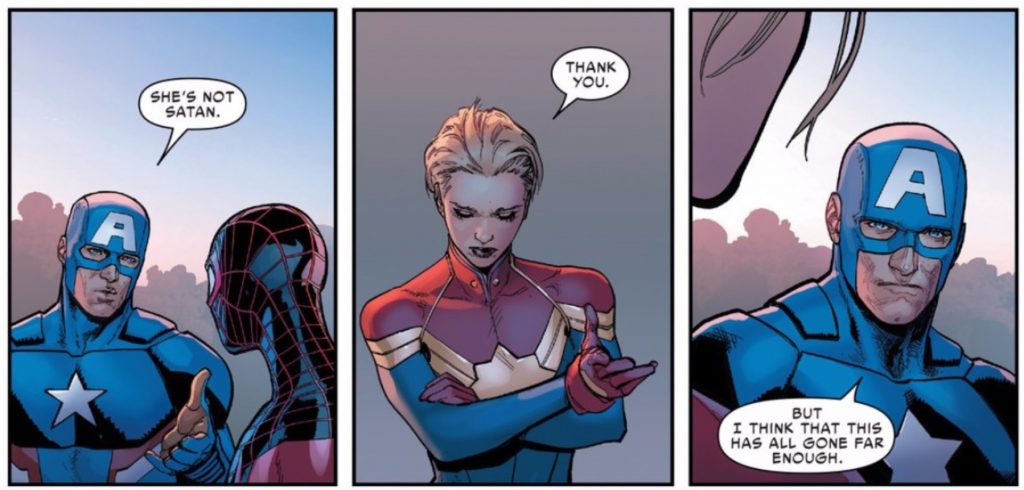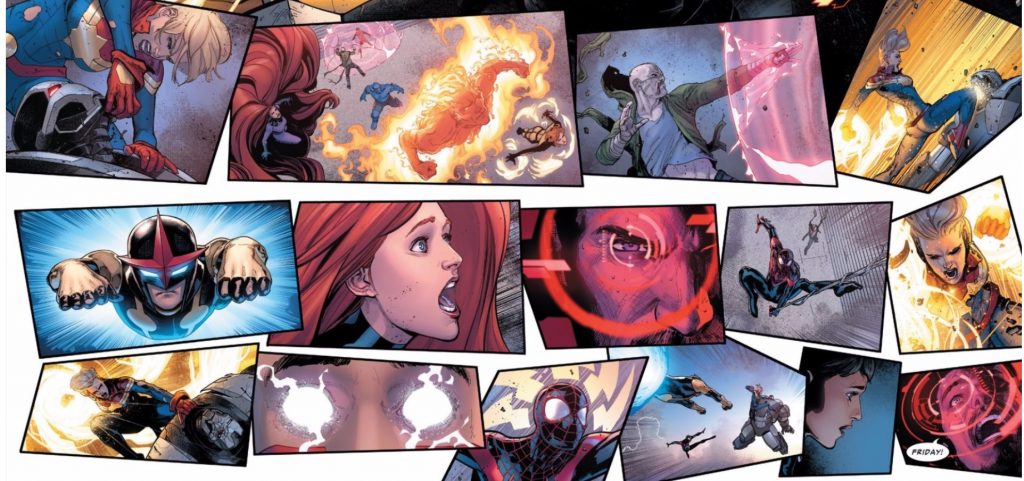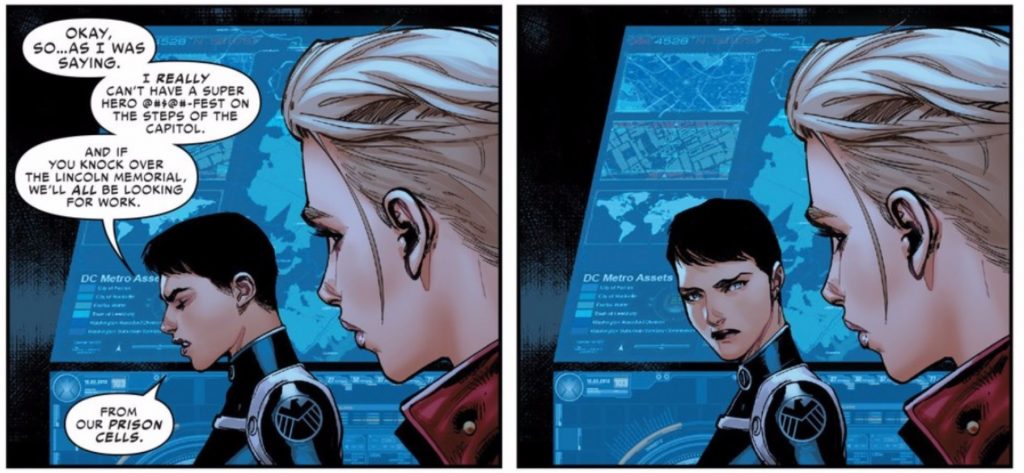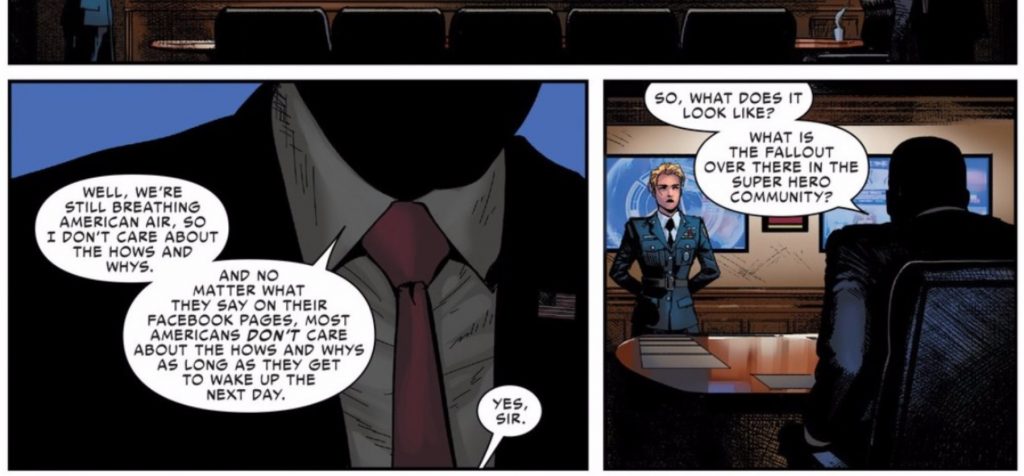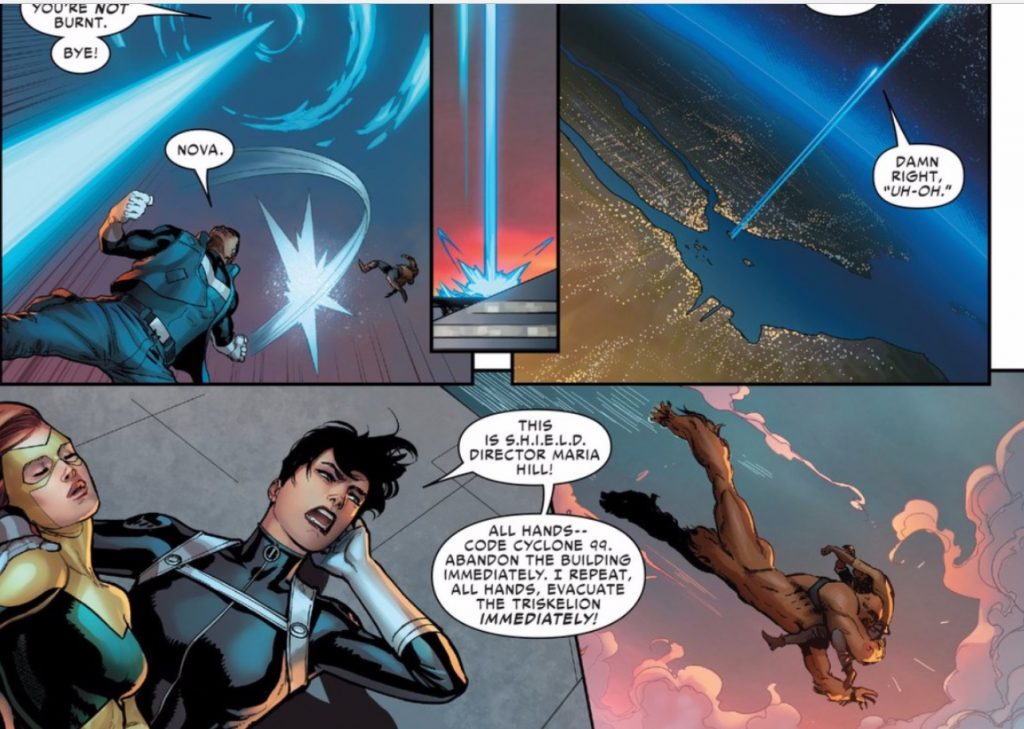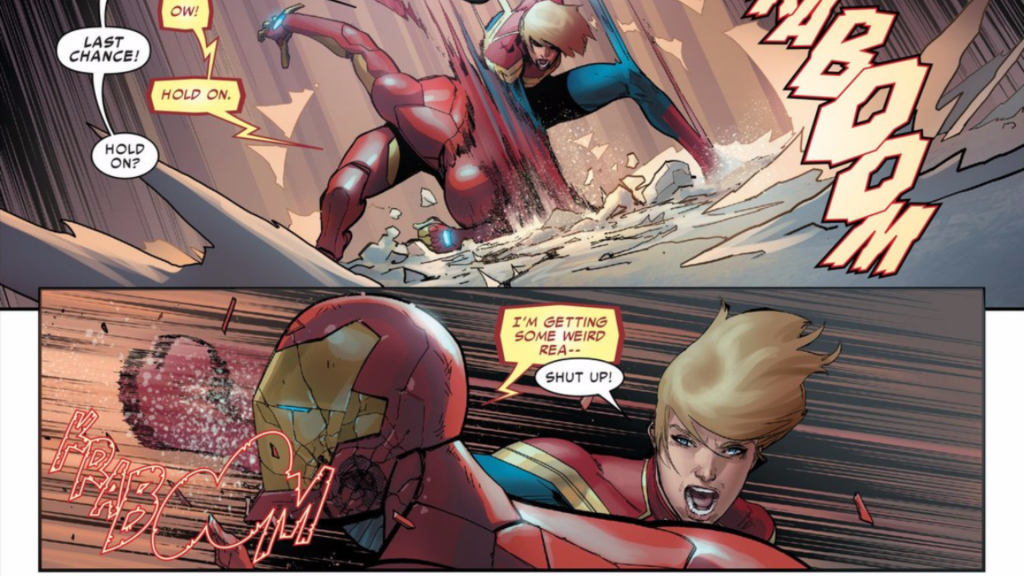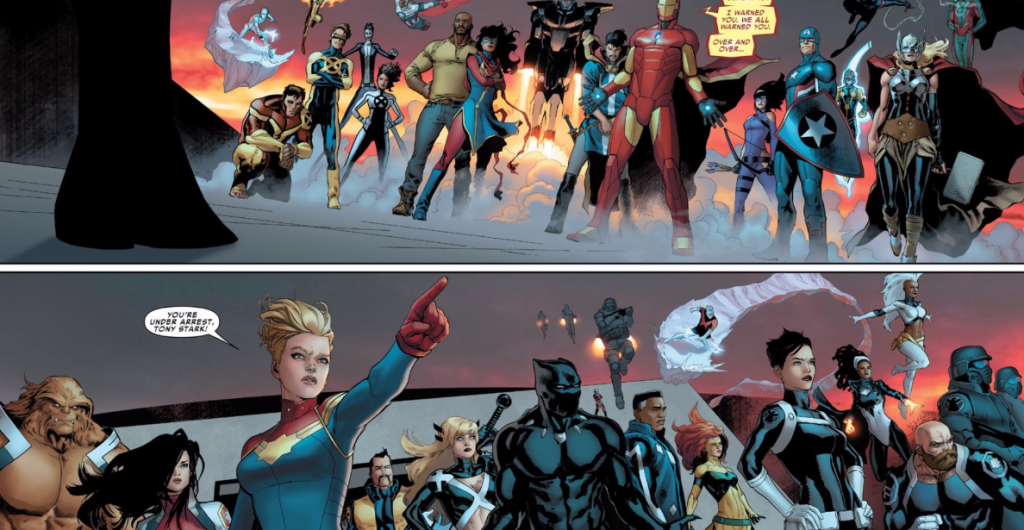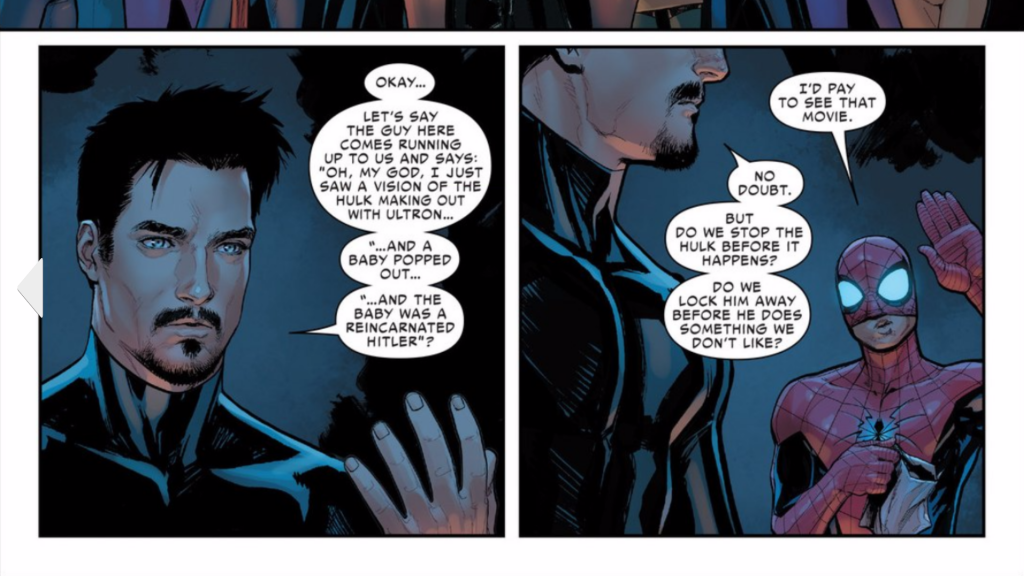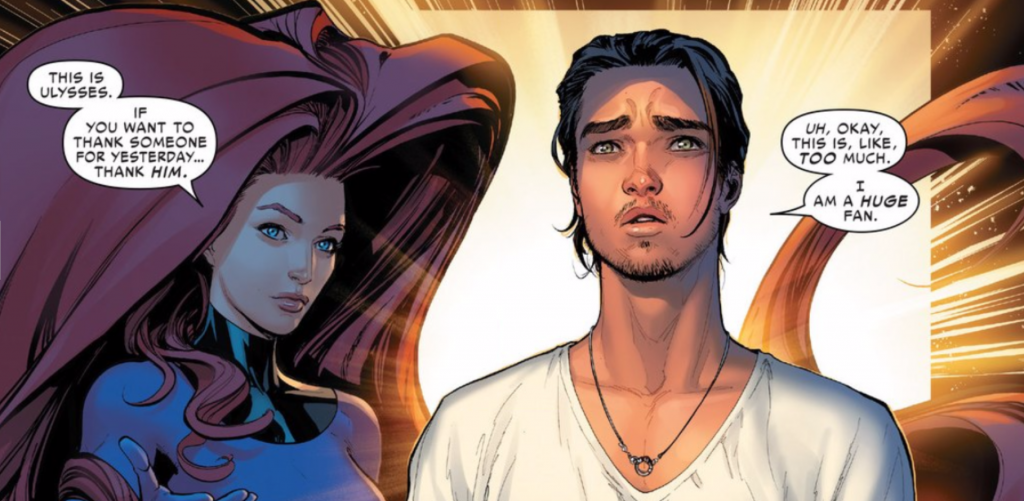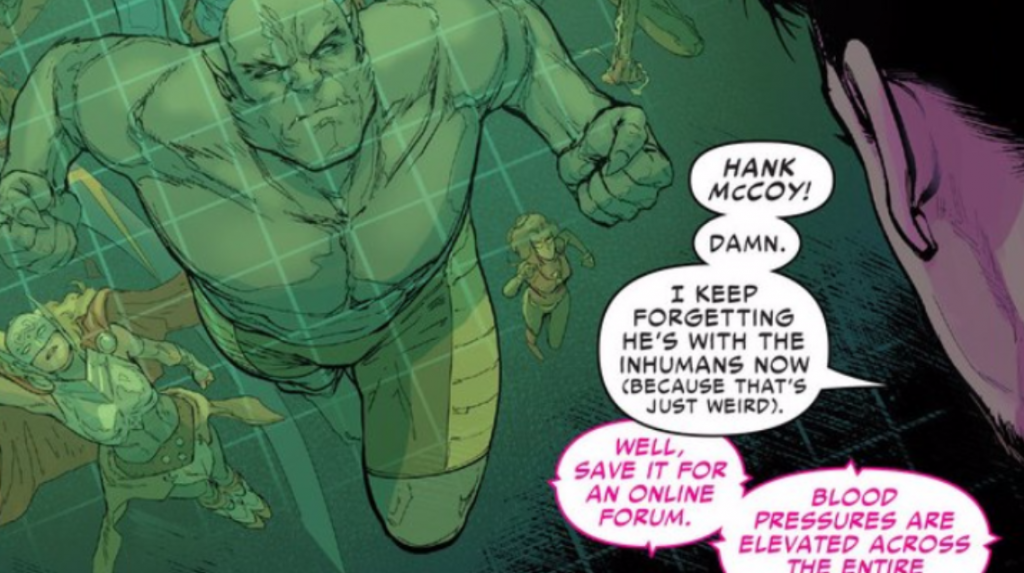"Sometimes I won. Mostly I lost. But you put the show on speed... I chew all they asses up. All them Grand Masters and them Europeans... with they government subsidies and whatnot to sit on they asses and play all day... they ain't livin'in the world. Put the clock on 'em, put the heat on they backs, they break down. Put 'em in the park fishin' for dollars, and they break.
That's Bobby Fisher-- some say he's the greatest player to ever play the game. I never played him. All them patzers sittin' around the park... waitin' for him to go back there, like Jesus. Me, I don't give a shit. Put the clock on that motherfucker... I'll chew his ass up just like the rest of'em. Chew it right up."
-- Samuel L. Jackson in FRESH, written by Boaz Yakin
* * *

CIVIL WAR II, by Brian Michael Bendis, David Marquez, Justin Ponsor, Virtual Calligraphy, Clayton Cowles, Axel Alonso, Tom Brevoort, the great Wil Moss, Alanna Smith, and Marko Djurdjevic.
Hi. This is a thing I wanted to try this year:
I'm going to read Civil War II, and after every two issues write something, with the plan being I post up some kind of something every hour. Half hour to read two issues; half hour to write something-- more or less.
I didn't read Civil War II while it was being published-- I am reading the collected edition courtesy of Comixology. I had read issues #0 and #00 -- I thought either #0 or #00 (or FCBD #1) was actually the first issue of the series, but that turned out to be an elaborate ruse. And at the time, I just figured "I can't figure out how to buy the first issue of your comic book" was as good an omen as a person could ask for to avoid a thing.
But I wanted to put the clock on and see how I'd do. I haven't done this in a while-- I feel super-rusty-- and I wanted to see if I'd bite the dust if I tried to think up anything interesting to say in a short window of time. I've felt a little drained of good humor lately-- a little low on the vim and vigor.
Thus and therefore: let's put the clock on. Let's get the heat on the back. Let's fish for some dollars.
(Plus, who hasn't seen that website Twitch and thought, "Hey, what would Twitch look like except for writing angry, inappropriate nonsense overreacting to comic books?" I know I'm not alone. The future is mine).
I'll be drinking some white wine that I got as a Christmas gift. I'll also at some point be ordering some fried chicken from Postmates for lunch. It's Sunday, I got the day from work, and I got a big hit comic book to relax with.
What could go wrong?
* * *
What's interesting about Civil War II besides the fact that it's the Cadillac of comic books?
Well, one, I thought it'd be an easy thing to try this whole idea out on. I'm old and extremely tired of hearing about these characters, but having opinions about Marvel comics is a pretty easy thing for a person to pull off, as tasks go. The audience "having opinions" is something that has sustained these comics for many years, I would think.
And there were a few other questions that struck me as being ones a person who read Civil War II would want to be asking themselves while they read it (besides "What went wrong with my life?" or "Is this why no one will ever love me?") ... I can't say I'll be answering any of these, on account of time-- this might just be a total car crash-- I'm feeling pretty rusty-- but here's a bunch of questions I thought a person might want to try to ask themselves, while reading Civil War II:
1) What's going on with the characters? What do they want, what are they afraid of, and what is the reader learning about them from the story?
So, for starters: basic meat & potato questions that a person wants to ask themselves when experiencing any kind of story.
Especially for a Brian Michael Bendis (hereinafter referred to as "Bendis") comic-- his orientation is usually more on character than on plot. He doesn't really write "mysteries" a person can solve at home, at least not that I've ever been around for. Based on every other Bendis comic I've read, I don't think it'll be fun trying to guess the ending of this comic, say.
Todd Alcott (who has shown up at the Beat in the past) has a saying, something like what a character wants is the reason the movie is happening. (When he talks about Jaws, he phrases it as "the path of the protagonist is the meaning of the movie"). I don't know if that's true or not-- but it sounds like a workable enough theory that maybe these are good questions to keep in mind.
I don't really care if someone's being written "in character" though. At this point, I don't really know who the characters are anymore, probably. They stopped being written any way I understood them a long time ago, I would guess, and status quos have changed enough, that maybe that's nothing a reasonable person can expect.
In the 00 and 0 issues that I read, I remember being confused that Thanos robs banks now. That's what I remember happening in the two issues that I read: there's an Inhuman who can tell the future named Ulysses or Samson or something like that; Marvel's trying to make the Inhumans happen (which will *never* happen) for business reasons; Thanos showed up to rob a bank or something, carrying machine guns, which is not how I remember that character ever acting, I thought he was more a Space Dictator, but I guess...???; there was a fight; and then a couple weeks later, I was talking with a friend, and they said "oh, James Rhodes got black-rificed in that fight because one of the squiggles in the 00 issue was the minority dying so that the white characters could experience emotions" and I went "I didn't even realize that had happened when I read it-- are you being for serious?", and apparently he was. So, that's all I remember about those two issues, but I think it's enough where I don't have to revisit them for this re-read.
Also worth noting: for that first Civil War series, the Marvel superheros being written out of character turned out to be a feature, not a bug.
2) Is this fun? Are the fights cool? Am I seeing cool shit go down?
It's a superhero civil war-- somebody's probably going to get punched, I'd figure.
Though, once your eyes get old, and you get weary of this world...
For me, most mainstream fight scenes just started to look like ... drawings of characters in "classic fight poses", but with the poses placed close enough to other characters in "Classic fight poses" so as to resemble characters fighting. As opposed to drawings of two characters actually engaged in a struggle, where the artist seems cognizant of both characters having their own weight, gravity, momentum, impact, etc.
Set aside manga.
The fights I remember in mainstream comics, the fun part was watching how characters would use their superpowers against one another -- Riptide spins his body and flings out shurikens, but Colossus uses his metal skin to withstand that long enough to break his neck.
Or if not that, then there'd be a scale to the proceedings-- Wonder Man and Hyperion punching each other into the sun, while an army of dead superheros fights the living to keep the galaxy from exploding.
But cut to modern comics, cut to me being gross and old, without vim or vigor, and I felt like I was just seeing characters drawn with their arms out in punching gestures near other characters drawn in slightly different punching gestures.
That had become "enough", if there were just enough of those characters drawn onto a page.
But look, is this the only criteria to judge fun? Of course not. Other things can make a series like this fun: cliffhangers; character turns; "Everything is different now" status quo changes.
So, let's see what we got! Shoe money tonight!
3) Is this purely an editorial product or are Bendis's themes discernible in the mix?
At this point, the question of whether or not Bendis has written a "good comic" is especially meaningless. They made a Netflix show of one of his comics that won a fucking Peabody, and he got to go to the Peabody's (!). This life's a game, and that dude's played the game well, man. (And I think he's deserved his success-- he worked very hard for it, anyways.)
So now that he's had this whole career, whether one comic is good or not doesn't seem all that Life-or-Death. But what strikes me as interesting is you can now see this entire career of him exploring and reexploring particular themes and go "oh how does this fit into that"...
More specifically, Bendis's career-long obsession is characters negotiating situations where the Old Systems don't work anymore-- characters either choosing to redefine themselves because of their exhaustion with the old status quo, or having new status quos thrust upon them.
And from the beginning of his career (Kingpin getting stabbed by his underlings; Ultimate Spiderman confessing his identity to Mary Jane, etc.), that's been his focus, moreso than on plots or fight scenes or anything traditionally "of comics". He has always made dominant the experience of watching character try to think their way through shifting status quos, usually out loud.
He has a total interest in the chaos and creative possibility of a certain kind of instability (though significantly less interest in the moments after that initial liminal moment, in resolving his changed status quos, which can create a certain frustration with his work).
So, yeah: how does Civil War II fit in that?
Civil War II would seem ideally suited to be in keeping with that theme. "Here's a new status quo, some characters like it, some don't." But we know he has to answer in this same comic to editors, marketing, line-wide publishing plans, machinations perhaps greater and more ridiculous than we are meant to know.
So: who won? Who won the Civilest War of them all?
4) What went wrong? Why is this the "Bad Crossover?"
Spoiler warning: "Here at ICV2, we've certainly been hearing about significant pull box abandonment by comic store customers over the past few months[.]"
I haven't been following the "Comics News" too closely but the impression I've gotten is this crossover was particularly badly received. This was the "Bad crossover" -- so bad that people started wringing their hands about the future again.
Why?
What made this worse than Siege? Fear Itself? The Lanterns of Arbitrary Character Death (I forget what that one was called)? Those were all fucking terrible. All crossovers to an extent stink because of how often the story gets smeared out across multiple books, rather than a team creating a strong dominant title that creates a possibility space for spin-offs (which I thought was the obvious strength of that first Civil War).
I think crossovers and the "creative environment" they result in is noxious and tends towards ripping off fans, plus more troublingly, stunting the growth of other creators. But I've thought that for years and years, and that didn't stop dumb-sounding shit like Avengers vs Xmen from selling.
So, what happened here?? What changed? Why is the bad one?
I'm pretty excited about finding out!
5) What's going on with this comic politically? Intentional messages? Unintentional messages?
The history of these crossovers is pretty fucking gnarly.
Well, the first Civil War at least ended with fascism triumphant because progressivism decided that opening up a meaningful dialogue with Nazis was better than punching them the fuck out. Liberal readers got to enjoy the fantasy of having an unearned smug sense of superiority while avoiding engaging with the world with anything more than empty talk; right wing readers got the fantasy of wielding unchecked power to control their world, even though the brazen stupidity of their ideas should've given them at least some pause; everybody got what they wanted...? Oh, this was all horribly cynical, but "Mark Millar Comic Discovered to be Cynical" -- that's too edgy an insight for a lowly comic critic like me; I haven't earned those stripes yet, not yet.
My memories of Secret Invasion are a little more tinged with anger, one that hasn't gone away. Not so much because of how that comic was about how righteous it'd be to violently suppress an evil religious minority who've infiltrated your society, or how the only downside of doing something as completely warranted as that would be that it could lead to a fascist demagogue seizing control at the end of that conflict. That's not ... not really great stuff, but I get what happened there -- they assumed who their reader was, what the Default Human Experience was, and proceeded accordingly. I was a brown person reading comics before comics started pretending it wanted brown people to read comics; so, that's just not some surprising thing to me.
No, the part that's never stopped bugging me, all these years later, is there was a one or two page scene of the comic lecturing protesters for being naive, for naively supporting the civil rights of religious minorities. I think protesters are fucking heroic, and responsible for great social achievements (the end of child labor, women having the right to vote, the 40 hour work week, civil rights, etc.), so found it very unsettling for a fiction purportedly about heroism to attack actual heroism. And that whole scene has really magnified in my mind given the way the world has gone in the last year. Now that the chips are down, superheros ain't coming to save anyone-- Hillary Clinton's too busy cough-fainting in the woods. All you see saving people is each other, massive groups of people responding to calls for help, coming out of their homes, standing with one another because they know nothing changes for the better without them.
So I'm especially uncharitable to the memory of that comic, at the moment, as it has only become more goddamn contrary to the thing keeping me sane anymore, as the years have gone by.
But look, years have certainly gone by: those two crossovers were a while ago-- nearly 10 years ago on Secret Invasion (!). Those were long before Marvel decided to sell itself as a company that panders to woke youths instead of pandering to charisma-free loners. Sales strategies evolve. Maybe people's philosophies evolve, too, maybe-- it'd be awfully nice to think so.
Civil War II should be interesting because it was created on the cusp of a whole mess of shit, changes that I don't think anybody can really lay claim to having their head wrapped all the way around; created by people who at the time were at least selling themselves as liberals since it was advantageous for them to do so -- but at a time when I think a certain kind of liberal was plainly telling themselves fairy tales.
So: I'm curious what all seeps in. If anything!
6) Is there anything-- anything!-- interesting at all about the presentation?
I'm just going to tell you my pet peeve, before we read this thing. It's a thing I noticed and once you notice, you can't stop noticing it. But when comic-drawing dudes and dudettes don't really have chops in laying out pages, they all pull the same move to avoid having their comics be extra-fuck-boring to look at.
They do widesceen panels-- which are the most boring fucking things on earth; how someone with zero imagination whatsoever draws comics-- but then in order to spice up the proceedings, they just have one character vertically take up two widescreen panels.
Here, I'll do a little drawing to show the kind of layout I mean:

I. Hate. This. Kind. of. Layout.
Because once you start noticing people doing it, you can't stop noticing it. Because some people, this is their ONLY MOVE.
I mean, it's a cute move-- I get that it "works." I don't know if Wally Wood put it in 22 Panels that Always Work, but sure, fine, it works, fine. I just hate it anyways. I hate it. I hate it so much. Irrationally? Very well-- irrationally.
But it's become the thing I look for now when I look at comics from this sector of the business-- "do they draw pretty but then hide their lack of storytelling chops behind this one whole move?" I say that out loud. In a comic shop. Scaring children.
I hate it so much. Have more than one move!
So, I want to see a fun layout.
BARBECUE!
But we'll see. We'll get what we get! I got a clock on me, so what gets said is what gets said. If you got two cents about the issues we're going to be reading, you can toss 'em out. And let's circle back at 3pm, for ...
Excitement!
Thrills!
Issues 1 and 2 of Civil War 2!
Sunday Barbecue!



![“Azzarello: But there’s always room for a 10th issue. [Laughs]” COMICS! Sometimes The Laughter is Hollow.](https://images.squarespace-cdn.com/content/v1/58c6f8b33a041115fb6baf1d/1504843057606-RW1TGUEKSS8DZDKKCCS2/DKTMRBatB_zpsefjcbpzf.jpg)




